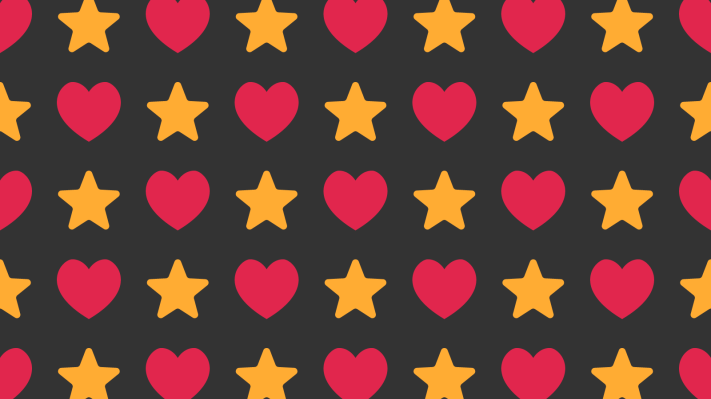We often forget that Twitter, more Web 2.0 media company than startup, is almost ten years old. We also forget that it has a global user base of just over 300 million people. But we can’t forget that Twitter is in trouble. Audience growth is at a crawl, which poses a threat to the publicly traded company as it tries to capture mindshare and advertising dollars in competition with other social networks like Facebook, Instagram and Snapchat. And I’m pretty sure nobody at Twitter has forgotten that.
To make the platform more approachable and intuitive for new users – something Twitter desperately needs to do – the company has today introduced hearts instead of stars. The heart represents a ‘Like’ instead of a ‘Favorite.’ If you’re particularly upset by this change you can download a Chrome extension to return the stars but let’s assume for a minute that you’re not upset but simply amused or baffled by it.
Twitter explained the introduction of the new Like thusly:
You might like a lot of things, but not everything can be your favorite.
The heart, in contrast, is a universal symbol that resonates across languages, cultures, and time zones. The heart is more expressive, enabling you to convey a range of emotions and easily connect with people.
Likes/hearts may make Twitter marginally more accessible to a new user, but the premise that a heart/like is more expressive than a Favorite is just silly. Even Facebook, which gets more value out of the invention of the Like than any company known to man, knows that the Like is limiting in what it allows a user to express. That’s why Facebook is slowly rolling out Reaction Emojis.
Favorite and Like may seem like highly similar words, but because Twitter stores away your Favorited (now Liked) tweets, the Favorite started out as a term with more than one meaning. Just like the Facebook Like, which people used to express empathy and other emotions despite the true meaning of the word, the Favorite had its own growing list of definitions, a list very different and more varietal than the Facebook Like.
A Favorite could mean thank you, a hand shake, a tip of the hat, or even a Robert DeNiro stare down. The favorite gave Twitter, which is built for speedy broadcasting of content, a different depth of expression for engagement.

If this miraculously solves Twitter’s larger issues — building an interesting feed of accounts to follow when you first join, or unscrambling a thousand topics from your timeline (which switch every 140 characters), or jumping off of the very public ledge of Twitter’s compose window to start sharing content with the world and not a closed friend group – then bravo to Twitter.
Social networks launch and fail on a daily basis. It is truly rare that one grows into a behemoth like Facebook or Twitter, and much of that lies in differentiation, the same way Instagram stormed the photo gates and Snapchat made things disappear. I’m not saying that the switch from a Favorite to a Like/heart makes Twitter exactly like Facebook, but it seems to mark a surrender of sorts. I wouldn’t be surprised to see more and more surrendering of design and general structure to the titan among the gods, Facebook, which has 1.4 billion global users and a share price of $103.35. Twitter stock, on the other hand, is at $29.38 a share.
I Don’t Like It
Switching to a like/heart feels like taking a step backwards with the vocabulary, and adding restrictions where unneeded. Twitter was built to allow 140 characters at a time. Imagine if you were in a room and told you could only speak ten words at a time. You would make them count, and in a conversation with others, you’d likely use body language to offer context around what you were saying.
Twitter relies on some digital equivalent of body language, which can range from media or links in a tweet to a hashtag to more explicit instructions for interpretation. Some people include in their bio on how RTs should be read from their account: (‘not an endorsement’, ‘my opinions and not my employer’s’). What will they say now? “Love ≠ Endorsements”
One of the greatest expressions of body language on Twitter was the Favorite. While the word ‘favorite’ is just a step beyond ‘like’ in the dictionary, the action of Favoriting a tweet meant a wide array of things. Drew Olanoff said it well in his post from earlier today:
I’ve always used favorites as a bookmark, a way to remind someone that it’s time to get coffee, a quick “hello,” a way to say “I know who you’re subtweeting,” a hug on a bad day and a smack when you’re acting a fool. And other things too.
The context of an RT can mean the difference between an endorsement or sarcasm. Favorites were the same. They could be used to keep a record, to act as a Read Receipt, to call out a subtweet, and yes, they can be used to ‘like’. But the mystery of that body language was part of what made Twitter different.
Twitter still has its differences in the form of constriction, with the 140-character limit leading the charge. But Twitter DM group chat, and unlimited characters in direct messaging, show Twitter’s desire to be a part of chat the way Facebook is with Messenger. Twitter Moments takes the speed and frenetic energy from Twitter’s Home feed and turns it into a something akin to the placid Facebook Newsfeed or Snapchat stories. And today, Twitter Likes suck the variety of a favorite (from a poke on the shoulder to a wink) down to the vague but generally explicit ‘like.’ Let’s not forget that Twitter is all about humans talking to humans and no matter how you slice the heart likes what the heart likes… or favorites.
